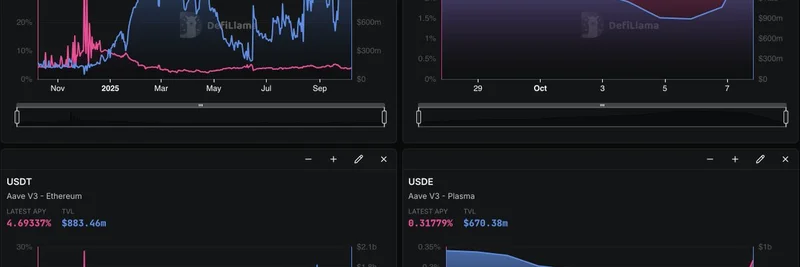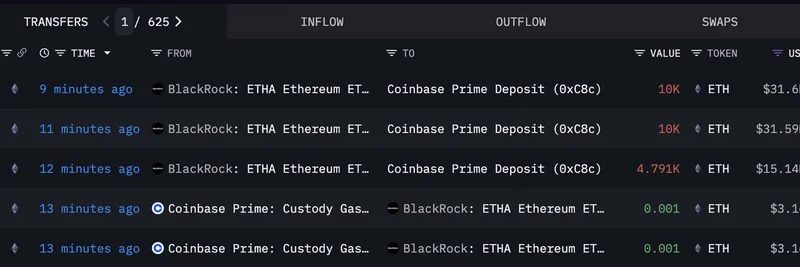If you're knee-deep in the world of decentralized finance (DeFi), keeping tabs on stablecoin yields is crucial. These yields represent the interest rates you can earn by lending stablecoins like USDC or USDT on platforms such as Aave. Recently, DefiLlama, a go-to analytics platform for DeFi data, dropped a tweet showcasing yields on Aave's V3 protocol. Let's break it down in simple terms and see what it means for blockchain enthusiasts and meme token traders alike.
The image from DefiLlama's tweet compiles yield data into a handy dashboard, likely powered by their Pro tools. It highlights four major stablecoins on Aave V3: USDC and USDT on Ethereum, plus USDTO and USDE on the Plasma chain. For those new to this, Aave is a leading lending protocol where users deposit assets to earn interest or borrow against collateral. V3 is its latest version, offering improved efficiency and cross-chain capabilities.
Breaking Down the Yields
Starting with USDC on Ethereum: The latest annual percentage yield (APY) sits at about 3.78%, with a total value locked (TVL) of $1.383 billion. The chart shows APY fluctuating wildly earlier in the year, peaking above 40% before settling lower, while TVL has been climbing steadily. This suggests growing confidence in lending USDC, possibly due to stable market conditions.
Next up, USDTO on Plasma clocks in at 2.06% APY with a TVL of $1.975 billion. Plasma, an Ethereum scaling solution, helps with faster and cheaper transactions. The yield here has been trending downward slightly, but TVL remains robust, indicating it's a popular spot for stablecoin holders seeking moderate returns with lower fees.
USDT, the giant in the stablecoin space issued by Tether, offers a higher 4.69% APY on Ethereum, backed by $883.46 million in TVL. Its chart mirrors USDC's volatility but shows a recent uptick in TVL, hinting at increased borrowing demand which pushes yields up.
Lastly, USDE on Plasma yields a modest 0.32% APY with $670.38 million TVL. This lower rate might reflect less borrowing activity, but the stable TVL points to it being a safe haven for parking funds.
Why This Matters in DeFi
These yields aren't just numbers—they reflect the health of the DeFi ecosystem. Higher APYs often signal more borrowing, which could mean traders are leveraging up for volatile assets like meme tokens. For instance, if you're holding meme coins built on Ethereum or Plasma-compatible chains, borrowing against stablecoins at competitive rates can amplify your plays. Tools like DefiLlama Pro make it easier to spot these opportunities by aggregating data across protocols.
In the meme token world, where hype can drive massive liquidity shifts, stablecoin yields provide a baseline for risk-free returns. If Aave yields dip too low, capital might flow into riskier meme plays chasing higher rewards. Conversely, attractive stable yields could pull funds back to safer lending, stabilizing the market.
Tying It to Meme Tokens
At Meme Insider, we're all about demystifying how DeFi intersects with meme tokens. Stablecoins are the backbone for trading pairs on DEXes like Uniswap or SushiSwap. When yields on Aave are competitive, it encourages more liquidity in stablecoin pools, which indirectly supports smoother meme token trades with less slippage. Keep an eye on these dashboards—shifts in yields could signal upcoming pumps or dumps in the meme space.
If you're looking to dive deeper, check out DefiLlama's Pro dashboard for real-time analytics. Staying informed on these metrics can give you an edge in navigating the wild world of blockchain and meme tokens. What are your thoughts on these yields? Drop a comment below!



